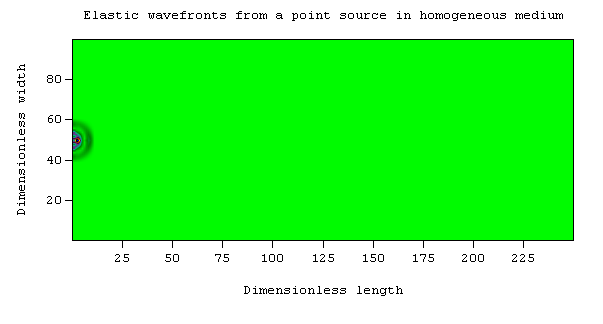![]() DEPARTMENT OF MECHANICS AND APPLIED MATHEMATICS
DEPARTMENT OF MECHANICS AND APPLIED MATHEMATICS
APPLICATION OF WAVE-PROPAGATION ALGORITHM
TO 2D THERMOELASTIC WAVE PROPAGATION
IN INHOMOGENEOUS MEDIA
CURRENT PROJECT:
Numerical Simulation of Two-Dimensional Phase-Transition Front Propagation
HEAD OF THE PROJECT Arkadi Berezovski
Dynamical problems in heterogeneous solids with phase interfaces attract a growing interest in science and engineering, especially in industrial applications of continuum mechanics and thermodynamics.
Recently, a canonical formalism of the thermodynamic constraints placed upon the propagation of discontinuity fronts such as shock waves and phase transition fronts in essentially thermoelastic solids was developed (Maugin et. al). In the framework of this formalism, extensions to coupled phenomena, as may be useful in the development and exploitation of "new" and/or "smart" materials, were accommodated in their non-linear dynamical aspects. The canonical formalism of continuum mechanics with a full exploitation of the balance of so called pseudo- or canonical momentum allows a direct generalization of many concepts in complex systems. The precise and mutually compatible forms of the second law of thermodynamics and of the balance of canonical momentum at the interface justify the growth of entropy at the front and also determine the structure of the front, whether dissipative or not. The obtained picture correlates with the view of such fronts as smoothed out but strongly localized solitonic or dissipative structures, depending on the case at hand.
This general framework of phenomenological continuum physics gives us the theoretical equipment to treat most of the cases that can be present in deformable bodies. It paves the way for further work of both theoretical and practical nature. It should be emphasized that the physically appropriate relation between driving force and material velocity at the front should be justified by a local analysis of the transition phenomenon at a smaller scale, involving the structure of the front. The microstructure of materials, which should be also taken into account, affects all the phenomena by complicated dispersion laws and high-order non-linearities. From a more practical side, a numerical scheme is to be developed in two dimensions to describe the progress of a front.

Recently developed high-resolution finite-volume schemes for solving the systems of equation for conservation laws are proposed for the simulation of the thermoelastic wave propagation. Performing of test computations and checking of thermodynamic consistency of the algorithms are the necessary preliminary steps for the modelling of the phase-transition front propagation in solids.
The establishment of a criterion of the beginning of phase transition is suggested in the collaboration with results of others investigators. This criterion should be incorporated into the model, and results of computations are to be compared with experimental data.
CONTACT PERSON
Arkadi BEREZOVSKI, Dr, senior researcher at IoC, email: berez@cs.ioc.ee, phone: +372 620 4164
PARTNERS
- Prof. Gerard A. Maugin, UNIVERSITY PIERRE & MARIE CURIE, Laboratoire de modélisation en mécanique http://www.lmm.jussieu.fr/
PUBLICATIONS
- A. Berezovski and G.A. Maugin, Material Formulation of Finite-Strain Thermoelasticity and Applications, J. Thermal Stresses, 1999, 22, 421-449.